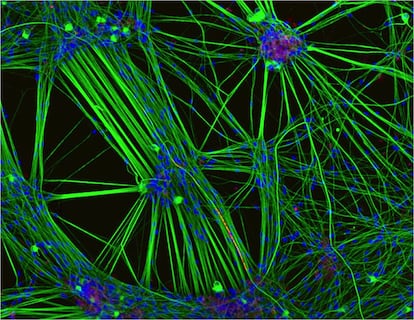Can obsessive-compulsive disorder be prevented through early detection?
A study on children identified genes that could play a role in the abnormal behavior of brain circuits in adults with a condition that affects up to 3% of the population

Each one of the more than 80 billion neurons in the human brain can establish between 1,000 and 10,000 contacts, or synapses, with other neurons. And because these are cells with permanent electrophysiological activity, it is impossible for us to imagine, using the brain that these cells have created, the sheer scope of the functional revolution that is permanently taking place inside our supreme organ.
We still don’t know how the brain creates thoughts and imagination, but we are convinced that both are the result of those impressive functional dynamics, of that permanent and varied energy flow that neurons make possible by connecting and disconnecting among themselves. Detecting those dynamics and highlighting their stability or their temporal and local variations is one of the best methods we have right now for understanding how the brain works to create both normal and pathological behavior.
The neuroscientist Carles Soriano, of the Bellvitge Institute for Biomedical Research in Barcelona, along with other researchers from various centers and universities in Spain and the United States, used functional magnetic resonance imaging to evaluate those temporal fluctuations between different brain regions in more than 200 healthy children with some obsessive-compulsive symptoms. This allowed them to identify regions with stable patterns of neural connectivity and to compare them with the altered patterns of adults with obsessive-compulsive disorder (OCD), which is characterized by an intolerance of uncertainty and feelings of anxiety that create intrusive thoughts and impulses, leading to repetitive behavior such as frequent hand-washing, the need to keep objects in perfect symmetry, or constantly wondering whether one has left the lights or the stove on. This kind of repetitive behavior is meant to reduce the anxiety or fear felt by the individual with OCD.
The reason for comparing the brain functions of healthy children with those of adult OCD sufferers is that previous research has shown that the appearance of certain obsessive-compulsive symptoms in children may be a sign that they are predisposed to suffer the condition as adults. This kind of knowledge could help establish preventive therapies.
Researchers working with these children found four areas where information converged in parts of the cerebral cortex, the striatum and the thalamus that were associated with adult OCD; three of those areas are associated with severe forms of the disease. After analyzing the genetic maps of those regions in more than 100 subjects, researchers identified genes that could be potentially related to the association between brain activity fluctuations and OCD. Two of those genes were related to glutamate, a neurotransmitter whose activity could serve as a biomarker to predict the risk of developing the disease as an adult, and even as a therapeutic target in prevention strategies.
The study has been published in the journal Biological Psychiatry Global Open Science and even if it is a correlational study, it is the first one to combine information from various sources to detect the possible origins of a disorder affecting between 1% and 3% of the general population and whose true nature we still know little about.
Tu suscripción se está usando en otro dispositivo
¿Quieres añadir otro usuario a tu suscripción?
Si continúas leyendo en este dispositivo, no se podrá leer en el otro.
FlechaTu suscripción se está usando en otro dispositivo y solo puedes acceder a EL PAÍS desde un dispositivo a la vez.
Si quieres compartir tu cuenta, cambia tu suscripción a la modalidad Premium, así podrás añadir otro usuario. Cada uno accederá con su propia cuenta de email, lo que os permitirá personalizar vuestra experiencia en EL PAÍS.
¿Tienes una suscripción de empresa? Accede aquí para contratar más cuentas.
En el caso de no saber quién está usando tu cuenta, te recomendamos cambiar tu contraseña aquí.
Si decides continuar compartiendo tu cuenta, este mensaje se mostrará en tu dispositivo y en el de la otra persona que está usando tu cuenta de forma indefinida, afectando a tu experiencia de lectura. Puedes consultar aquí los términos y condiciones de la suscripción digital.











































